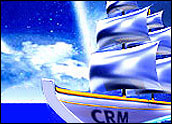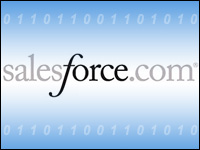
No longer having to hear that “CRM is dead” is one thing to be thankful for, says Brad Wilson, general manager ofMicrosoft Dynamics CRM.
That was a talking point making the rounds a few years back, and it developed sudden and significant traction when it was echoed by an executive of one of the leading CRM vendors at an industry conference. No more though, Wilson notes.
That idea is, well, dead. “Businesses are turning renewed focus to customer-facing systems that help them drive more consistent and mutually profitable relationships,” he told CRM Buyer.
It’s easy to see where Wilson is coming from: Microsoft CRM is gaining real traction in the market and is on its way to becoming one of the leading vendors in the space, despite the application’s lackluster start.
Dominant Delivery Model
It’s not just Microsoft Dynamics, though, that is feeling confident about what 2007 has in store. The rest of the industry is as well. CRM has emerged from the slump of 2003-2004 nicely, with firms projected to register respectable growth for the year.
Our informal and decidedly ad hoc survey of what vendors and customers in the CRM space are most thankful for seems to confirm their overall optimism about the future.
To be sure, many of the comments we received were self promotional. However, they were also telling — about the industry, about emerging trends, and about directions that customers want vendors to take.
Not surprisingly, on-demand topped many vendors’ list of things to be hopeful about in 2007 and beyond — and for good reason. On-demand is likely to become a dominant delivery model for CRM and other applications in the medium term.
“One key trend is that customers are looking at on-premise and on-demand CRM as simply two technology delivery models — each with its own costs, benefits and trade-offs,” Wilson commented.
“To paraphrase the late economist Milton Friedman, I think it’s always better when CRM providers enable their customers to be ‘free to choose,'” he added.
“As a vendor, the shift in the computing industry from the old client/server paradigm to the broad acceptance of the SaaS model is one thing we can be thankful for,” Jason Mittelstaedt, vice president of marketing for RightNow Technologies, told CRM Buyer.
“It’s enabling us to focus our time with clients on solving business problems rather than technology infrastructure issues, so we can deliver solutions to our customers faster and with more accountability.”
As Bob Conlin, chief marketing officer of Centive simply stated: “I’m thankful that more companies recognize on-demand solutions as viable alternatives to traditional enterprise CRM and sales-related applications.”
Mobile and Smartphone Strategies
Vendors were also frank about eating their own cooking.
“I am most thankful for the advantage that mobile CRM provides in my business day,” Richard Smith, vice president of CRM Strategy atGreen Beacon Solutions, told CRM Buyer.
“[It gives me] the ability not only to access my contacts and reminders, but also to [execute] critical deals and activities. Mobile CRM enables me to make use of traditionally ‘lost time’ on the road, in airports, and between meetings,” said Smith.
Mobile CRM has been a difficult strategy for vendors to crack thus far, but momentum finally appears to be building for this technology.
Exact General Manager Matthew Bather is also thankful for the growing adoption rate of smartphones with access to Internet-based applications that give access “anytime, anywhere.” The reasons for his gratitude range from the fundamental — “the rapid expansion of high speed Internet access in varying forms” — to the specific: “pervasiveness of the dot-net platform, the growing requirements for companies to become compliant within [regulations such as] SOX, ISO etc.”
Integration Tops the List
Integration between contact center and CRM applications is also starting to make headway, thanks to a combination of on-demand applications in this area, as well as better and more integrated desktop agent software.
Citing a statistic from an annual survey his company conducts, Grant Sainsbury, practice director for customer interactive solutions with Dimension Data North America, told CRM Buyer that he is thankful that 47 percent of organizations that are still determining their contact center development plans will incorporate their overall corporate CRM strategy. “Hopefully that percentage will rise in 2007,” he said.
Better integration technologies and strategies were among the most oft-cited reasons vendors gave to be thankful. For instance, Gary Palgon, senior director of B2B service providerNuBridges, told CRM Buyer that item synchronization is one CRM concept he is thankful to see gaining traction.
“Item synchronization ensures that everyone in the go-to-market process can focus on getting the right products on the right shelf at the right time. From size and weight to color and packaging, it’s critical that as products change, these changes are communicated down the line, including manufacturers, distributors, retailers, store planners and advertisers.”
Jim Stout, CEO of Microsoft partner Invoke Systems, is thankful for “better integration between the applications I use every day, like Outlook and Excel. This has made it easier for me and my users to use our CRM application and increase its value to my company.”
Finally, we at CRM Buyer are thankful to everyone who responded to our survey and — to paraphrase many of the vendors (Natalee Roan, chief technology officer withEntellium, to name just one) who told us they are thankful for their customers — to everyone reading this story as well.























































